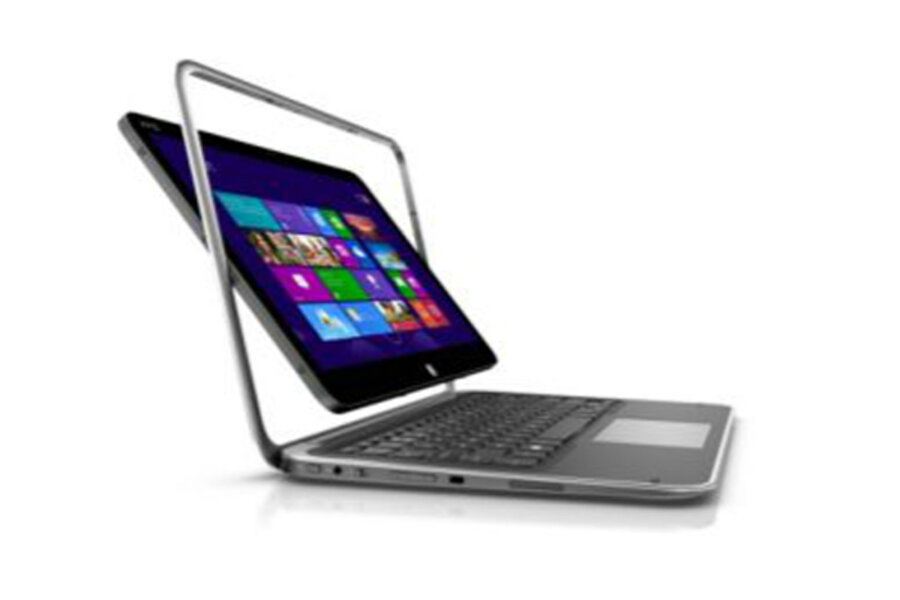Buying a laptop? Look for Haswell.
Loading...
This winter is a good time to go laptop shopping. Intel released its latest line of processors for desktops, laptops, and lightweight Ultrabooks. This new generation of chips, code-named Haswell, will make computers faster and much more energy efficient than before.
"This is the biggest battery-life increase we've seen, generation to generation," says Pat Cassleman, Intel's Haswell product marketing manager.
For example, Apple's 2013 MacBook Air – one of the first computers to utilize Haswell – gets close to double the battery life of the 2012 model, according to a survey of independent reviews. The latest Air with a 13-inch screen can play video uninterrupted for more than 8 hours, compared with 5 hours for last year's model.
Intel also designed these "fourth generation" processors to help computers sleep for longer and wake up faster. Windows 8 Ultrabooks from Asus, Sony, and Dell can now drift into standby mode for more than seven days without needing a recharge. When you're ready to use the computer again, the new Ultrabooks bounce back to life in less than 3 seconds.
Many laptops, desktops, and Ultrabook models now come with Haswell chips, but the rollout has been slow and staggered. With the new year, however, most computers will have switched over.
"If you don't care much for battery life, the computing performance difference [over the previous Intel chips] is not that great," says Matt Smith, who reviews computers for Digital Trends. "It's not like, if you buy the third-gen, all of a sudden you're going to have a computer that feels really slow. You'll still be fine."
For this reason, people in the market for a desktop should not feel obligated to wait for a Haswell processor, he says. Look for one, but don't hold off your purchase.
There are a few ways to confirm that a new machine comes with Haswell. First, look for an Intel sticker that uses the words "fourth generation."
If you can't find one, check out the spec sheet. The company identifies most of its processors with a four-digit code, such as the Intel Core i7 4650U (the 4 at the beginning of the code stands for fourth generation) or the Core i7 3667U (which is third generation). Also, online reviews from CNET, The Verge, or Digital Trends often mention if the processor is a Haswell or not.
As with many of its past products, Intel named Haswell after a geographic area. The team originally wanted to dub this new line "Molalla," after the town in Oregon. But Intel ultimately nixed the name because people weren't really sure how to spell or pronounce it. Instead, they landed on Haswell, a town in eastern Colorado (pop. 70).
"Particularly on the high end, we're going to see computers update to Haswell in the next few months," says Mr. Smith. "So, if you can wait, that'll be good. With budget laptops, however, those are usually the last to see an update."
For more on how technology intersects daily life, follow Chris on Twitter @venturenaut.
This is an updated version of an article that ran in the August 12 issue of The Christian Science Monitor weekly magazine.





